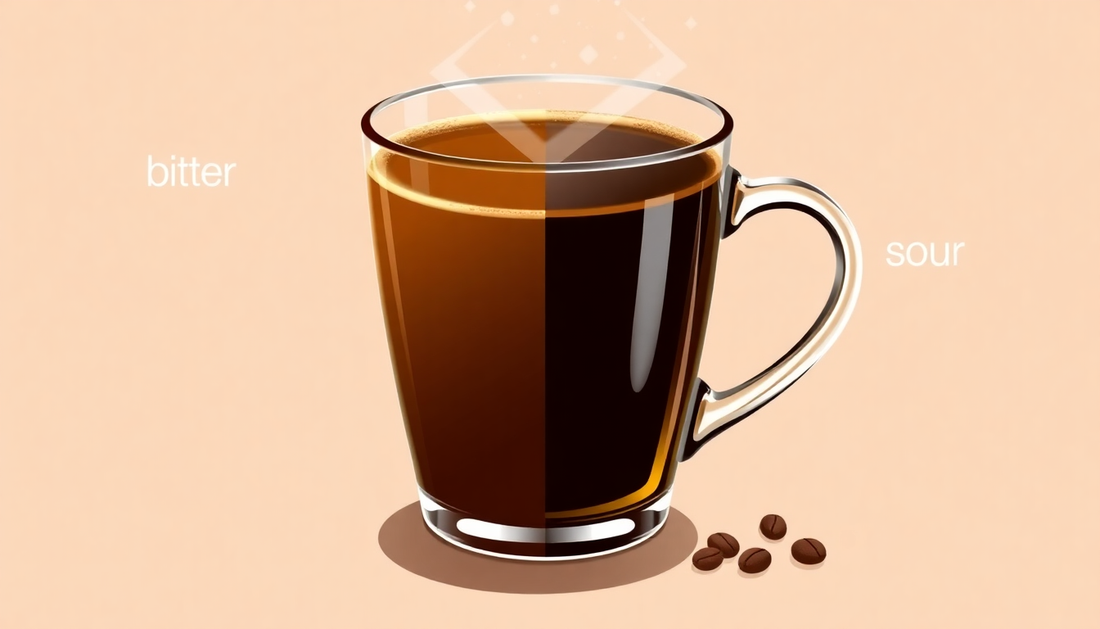
Sourness vs Bitterness in Coffee: Discover the Difference
Understanding Sourness vs. Bitterness in Coffee
Coffee is a beloved beverage enjoyed by many around the world. The different flavors and aromas not only keep our morning rituals interesting but also allow for a vast range of experiences. One crucial aspect of coffee enjoyment is understanding the different taste profiles, particularly sourness and bitterness. This blog post will delve into the difference between sourness and bitterness in coffee, helping you to appreciate your brew even more.
What is Sourness in Coffee?
Sourness in coffee often confuses many drinkers because it can be mistaken for undesirable flavors. In coffee, sourness is tied to acidity in coffee, which is a critical flavor profile that adds brightness and complexity. Acidity is not a negative trait; instead, it brings a lively element to the drink.
Several factors contribute to the sourness of coffee. Firstly, coffee freshness plays a vital role. Freshly roasted beans often have a unique bright acidity that can be perceived as sour. In contrast, older coffee tends to lose those vibrant notes, leading to a duller taste.
Brewing temperature is another factor. If you brew coffee with water that is too cool, you may extract more sour flavors. Ideally, the brewing temperature for coffee should range between 195°F and 205°F (90°C to 96°C). A proper brew temperature helps balance the acidity, extracting just the right amount of flavor without emphasizing unpleasant sour notes.
What is Bitterness in Coffee?
Bitterness is distinctly different from sourness. It manifests as a sharp, sometimes harsh flavor that can be an acquired taste. While sourness relates closely to acidity, bitterness usually involves elements that have extracted too much during brewing, resulting in an intense, sometimes overwhelming taste.
Several factors can contribute to bitterness in your cup. One of the most common causes is over-extraction during brewing. When water remains in contact with coffee grounds for too long, it continues to draw out flavors, leading to unpleasant bitter notes. Understanding your brewing method and timing can be key to managing bitterness.
The roast level of your coffee beans also affects bitterness. Darker roast levels tend to bring out more bitter flavors, while lighter roasts maintain a more delicate balance. If you prefer your coffee smooth and sweet, you may want to try lighter roast beans to keep the bitterness at bay.
The Science Behind Sourness and Bitterness
Our taste buds respond differently to sour and bitter flavors. Sourness activates acid receptors, which can lead to a mouthwatering sensation, while bitterness interacts with different receptors that often warn us of potential toxins. Therefore, understanding this difference can help you appreciate the role both flavors play in coffee.
Knowing coffee flavor profiles is crucial when distinguishing between sourness and bitterness. Experienced coffee drinkers often refer to specific flavor notes to describe their experiences better. Familiarizing yourself with these notes can enhance your ability to identify the different elements present in your coffee.
How to Taste Coffee: A Guide
Tasting coffee involves more than simply sipping. Here are some steps to refine your tasting technique:
- Look for Specific Flavors: Pay attention to various flavors in your coffee, such as fruity, nutty, or chocolatey notes.
- Note the Balance of Sourness and Bitterness: As you sip, try to identify where the coffee falls on the spectrum between sourness and bitterness.
When it comes to home brewing, experimenting with different brewing times and temperatures is advisable. Adjusting these variables can dramatically impact your final cup, allowing you to find a balance that suits your palate.
Finding the Right Balance in Your Coffee
Finding the perfect balance between sourness and bitterness is essential for a delightful brew. Ideally, a well-rounded cup should possess a harmonious mix of both profiles, allowing you to enjoy a richer, more vibrant flavor.
To adjust your brewing methods, consider the following tips:
- Play with Brewing Time: Shorter brewing times can help reduce bitterness, while slightly longer times can bring out more rich flavors.
- Experiment with Grind Size: Finer grounds generally extract more quickly but may lead to bitterness. Coarser grounds can enhance sweetness and sourness, creating balance.
Common Misconceptions about Sourness and Bitterness
When it comes to coffee, there are numerous myths surrounding these flavor profiles. One common misconception is that sour coffee is inherently bad. In reality, many premium coffees exhibit bright acidity that many coffee aficionados adore.
Another myth is the view that bitterness is always unpleasant. While excessive bitterness can ruin a cup, some bitterness is desirable as it provides depth and richness. Understanding when and how these flavors play a role can lead to a more enjoyable coffee experience.
Conclusion
Understanding the difference between sourness and bitterness in coffee is essential for coffee lovers. Recognizing these flavors will enhance your tasting experience and help you appreciate the complexities that each cup has to offer. Experimenting with different brewing techniques and flavors will allow you to cultivate your unique coffee ritual. So get ready to explore, taste, and discover your favorite flavors in that next cup from UK Espresso!